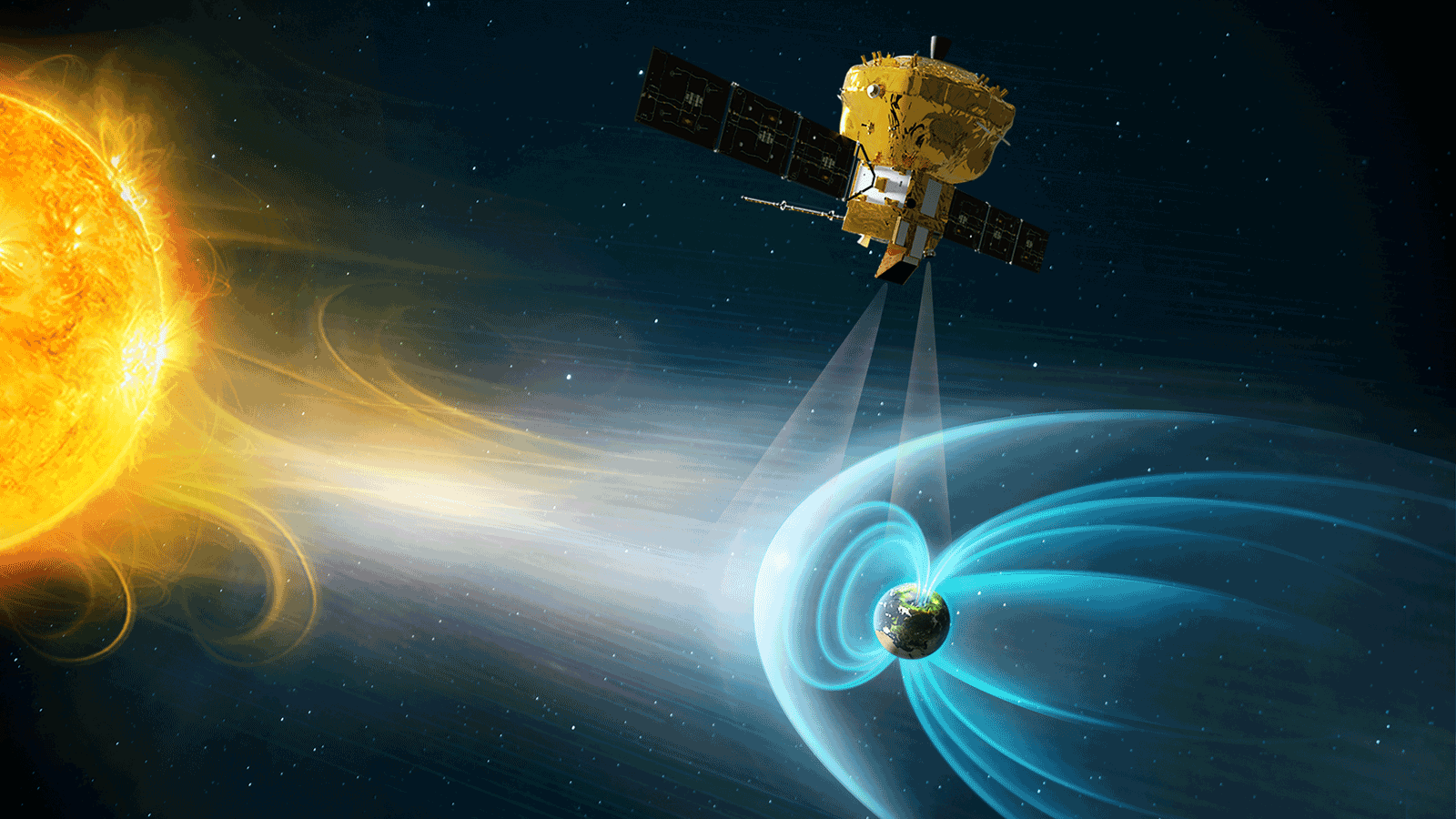
By Tanya Weaver, Tue 30 Apr 2024 — updated 1 May 2024
Collected at : https://eandt.theiet.org/2024/04/30/esas-solar-wind-mission-set-launch-space-late-2025
The European Space Agency (ESA) has announced that the Smile (Solar wind Magnetosphere Ionosphere Link Explorer) mission will launch on a Vega-C rocket from Europe’s Spaceport in French Guiana in late 2025.
Smile is a collaboration between ESA and the Chinese Academy of Sciences (CAS). The mission marks the first time that ESA and China have jointly collaborated to select, design, implement, launch and operate a space science mission.
The objective of Smile is to measure the solar wind and its dynamic interaction with Earth’s magnetosphere while the spacecraft orbits around the earth. It marks the first ESA mission that will view the full Sun-Earth connection.
The hope is that the mission will provide a greater understanding of the Solar System, particularly space weather and solar storms. This knowledge will help protect space-based technology and the lives of any humans in orbit around Earth, as well as infrastructure on Earth’s surface.
For the past four years, ESA’s scientists have been working with Arianespace, a French satellite launch company, to enable the Smile mission to launch on the Vega-C rocket, a single body rocket nearly 35m high, with a mass at liftoff of 210 tonnes.
The first launch of the Vega-C launch vehicle lifted off from French Guiana in July 2022. This maiden flight can be seen in this video:
After Smile launches in 2025, Vega-C will place it in a low-Earth orbit, from which the spacecraft will propel itself to high-Earth orbit, where it will fly around the Earth roughly every two days at a distance of 121,000km from the Earth’s surface.
It will then approach within 5,000km to download its stored data to ground stations in Antarctica and China.
This data will include the first X-ray images and videos showing the solar wind slamming into Earth’s protective magnetic bubble. According to ESA, its complementary ultraviolet images will provide the longest-ever continuous look at the northern lights.
In autumn 2024, the European and Chinese sections of the spacecraft will arrive at ESA’s technical centre ESTEC. There the two sections will be joined together, and the spacecraft will be tested as a complete unit for the first time.
From there, the spacecraft will be shipped from ESTEC to Europe’s Spaceport in French Guiana ready for launch in late 2025.
“Today marks a major milestone for our innovative Smile mission and signals the determination of all our teams and partners to deliver a successful mission on schedule for maximum scientific benefit,” said Professor Carole Mundell, ESA director of science.

Leave a Reply